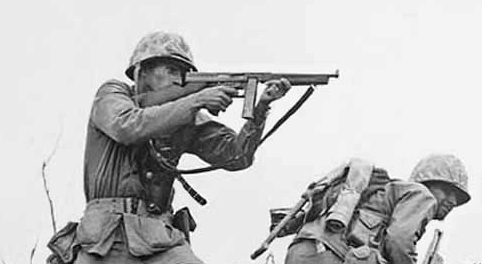| Year | January 1940 (M1928A1) April 1942 (M1) October 1942 (M1A1) |
| Weapon Type | [@type] |
| Origin & Designer | [@designer] |
| Numbers Produced | 562.511 (M |
| Crew | [@crew] |
| Calibre | .45 APC (11.43x23) |
| Elevation | [@elevation] |
| Traverse | [@gun_traverse] |
| Cartridge Weight | [@cartridge_weight] |
| Round Weight | 230gr (15g) |
| Barrel Length | 260mm |
| Overall Length | 810mm |
| Grenade Types | [@grenade_types] |
| Mount | [@mount] |
| Combat Weight | 5.4 kg (M1928) 5.31 kg (M1 & M1A1) |
| Operation | Blow Back Fully Automatic |
| Cooling System | [@cooling] |
| Sights | Front Blade and Fixed Rear Peep |
| Feed | 30 Round Box or 50 Round Drum Magazine (M1928A1 only) |
| Practical Rate of Fire | 210 r.p.m. |
| Maximum Rate of Fire | 700 r.p.m. |
| Blank Cartridge | [@blank_cartridge] |
| Muzzle Velocity | 280 m/s |
| Fuel Capacity | [@fuel_capacity] |
| Minimum Range | [@minimum_range] |
| Effective Range | 50m |
| Maximum Range | 150m |
| Armour Penetration | [@armour_penetration] |
| Bayonet | [@bayonet] |
| Traction | [@traction] |
| Variants | [@variants] |
| Notes | The Thompson M1928 was first used by the US Navy and was the first version to see military action. When the US Army entered WW2 they adopted the M1928A1 version as their primary sub-machine gun. This was very expensive to produce so a simpler version (the M1) was developed, the main drawback was that this could not use the drum magazine issued to the M1928A1, but the M1 turned out to be more reliable in the field and as a result it was the most common version used in WW2. The M1A1 was a simplified version of the M1 and saw service in Korea. |
